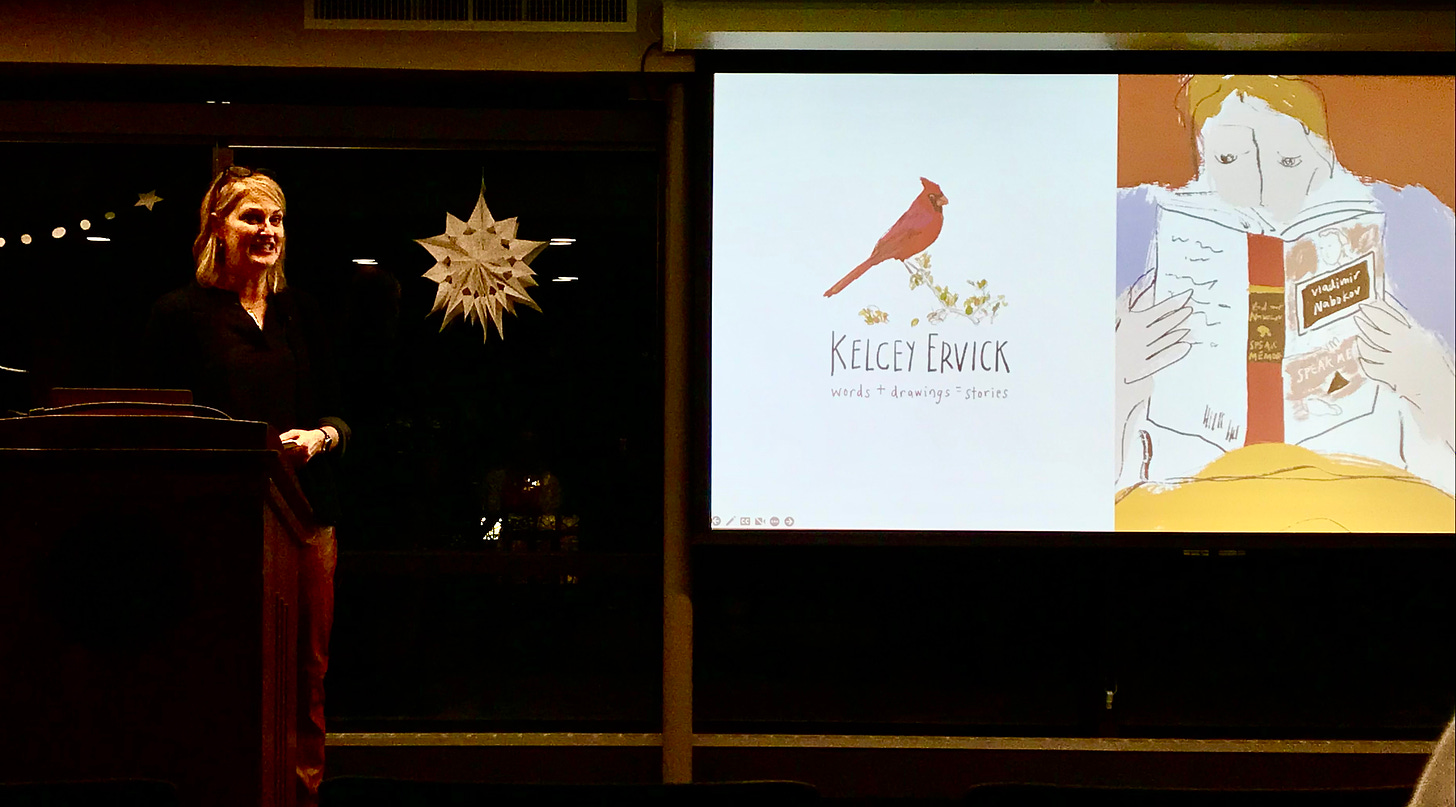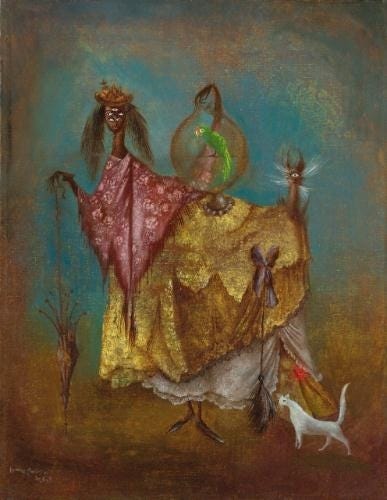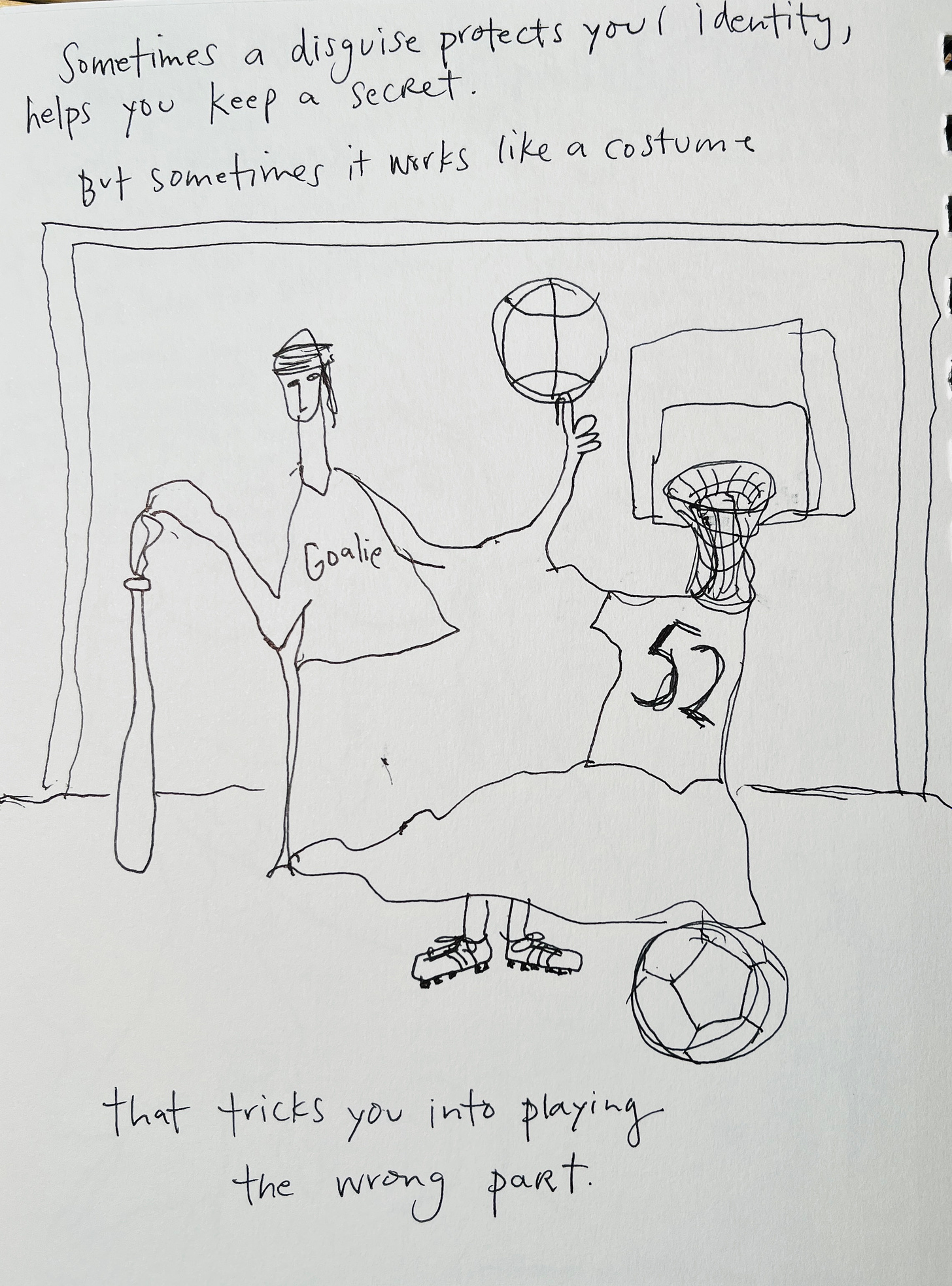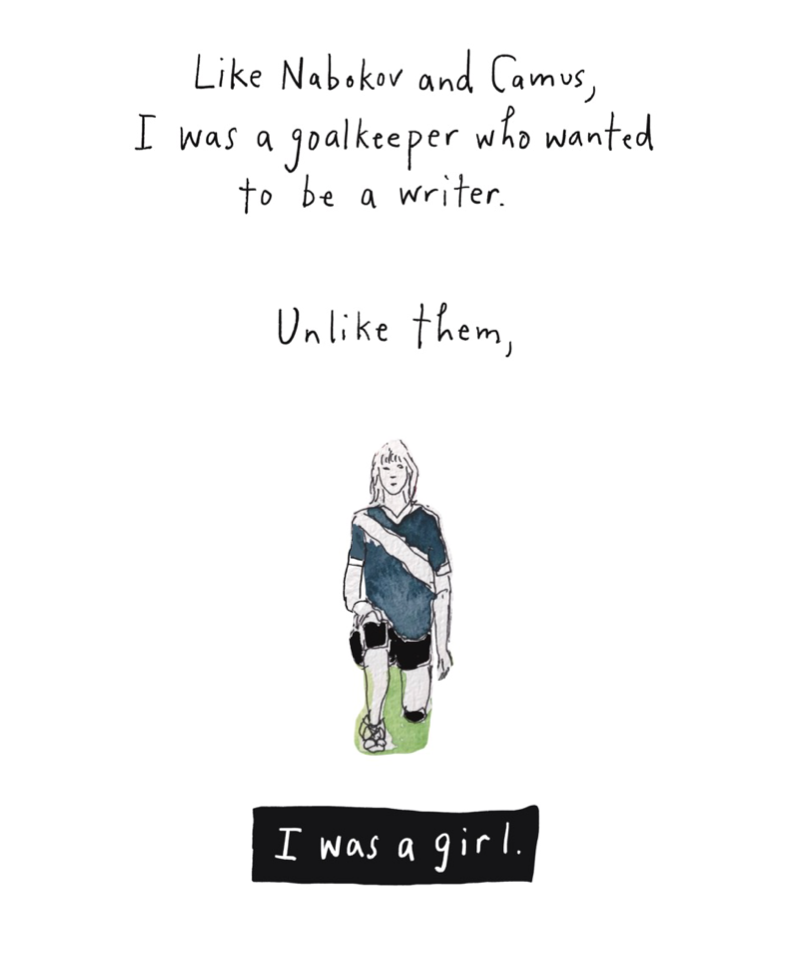I recently had an event at the University of Notre Dame and met with students in the MFA in Creative Writing program (who are LOVELY). A lot of my talks for my graphic memoir The Keeper have focused on Title IX or girls’ sports, but for this one I was excited to take a different angle: The Keeper as künstlerroman.
A few years ago I wrote a blurb for a fabulous book, and I referred to it as a künstlerroman. The author was happy with the blurb and thanked me for it.
“But,” she told me later, “I had to look up künstlerroman.”
So, yeah: a künstlerroman is novel about the development of an artist. It’s a subcategory of the better-known bildungsroman, the coming-of-age or education novel. [From the German: künstler = artist; bildungs = education; roman = novel]
Classic examples of künstlerromans are A Portrait of the Artist as a Young Man by James Joyce and The Sorrows of Young Werther by Goethe. I’d argue that Virginia Woolf’s Orlando is a brilliant example. Or Sandra Cisnero’s The House on Mango Street or Maya Angelou’s memoir I Know Why the Caged Bird Sings. I just looked and found Jeannette Winterson’s Oranges Are Not the Only Fruit and Alison Bechdel’s Fun Home among a growing list on Wikipedia.
Speaking of Bechdel, nothing can top Alison Bechdel calling The Keeper “a triumph!” but another blurb I really love came from KJ Dell’Antonia, who said: “The Keeper is a feminist anthem and a writer’s coming-of-age in graphic disguise.”
For all the sports and Title IX content in The Keeper, I was so gratified that her blurb honed in on one of the key questions that I explored in the book: How did a dorky too-tall girl goalkeeper (me) become a writer?
Some people seem to be on the artist’s track since birth. Maybe you are one of those. Even though I loved to read and make stories, it was never a given that I would become a writer or artist. I knew there such thing as an artist type, but I was not that—I was the athlete type.
I often loved that identity. It felt special as a girl to be an athlete. But I wanted to try other identities too.
I think a lot about a painting by one of my favorite artists, Leonora Carrington: “The Artist Traveling Incognito.” Carrington called this painting of a two-headed, 5-eyed (plus one eye on the other head), furry creature a self-portrait:
In my sketchbook, I scribbled some notes about the painting. “I think she wanted to protect her art and self with disguise,” I mused:
Then I sketched a version of me inspired by the painting, imagining how my “disguise” was my sports uniforms. But I wondered if, instead of protecting my artist self, the uniforms obscured it:
There always seemed to be a disconnect between my sports life as a kid and my writing life as an adult. So one of the early impulses in making The Keeper was the desire to see if I could find connections rather than disconnections.
And the connection was there all along in the position I’d loved and lamented for so many years: the goalkeeper.
Nabokov was a goalkeeper, Camus was a goalkeeper.
And I realized that being an athlete and being an artist had a lot of similarities—especially if you were a girl.









I'm devouring your posts in one day! And hope that doesn't weird you out. I have yet to read Keeper but will... And wanted to say, as a high school, college and post college athlete in field hockey, roller hockey (including failed women's prof roller hockey league of late 90s), and ice hockey, as well as being on the Title IX committee of my university... AND as an avid journaler, writer, and artist... I so get this! My athletic life was (and is) way to outwardly express all of the angst and emotion that I privately poured into my journals. And a way to commune with other women (team sports with women are so fulfilling in so many ways). And a way for an introverted girl to express outwardly in a socially acceptable way an inner desire to be a warrior goddess! 😆
Yay I love this post so much!